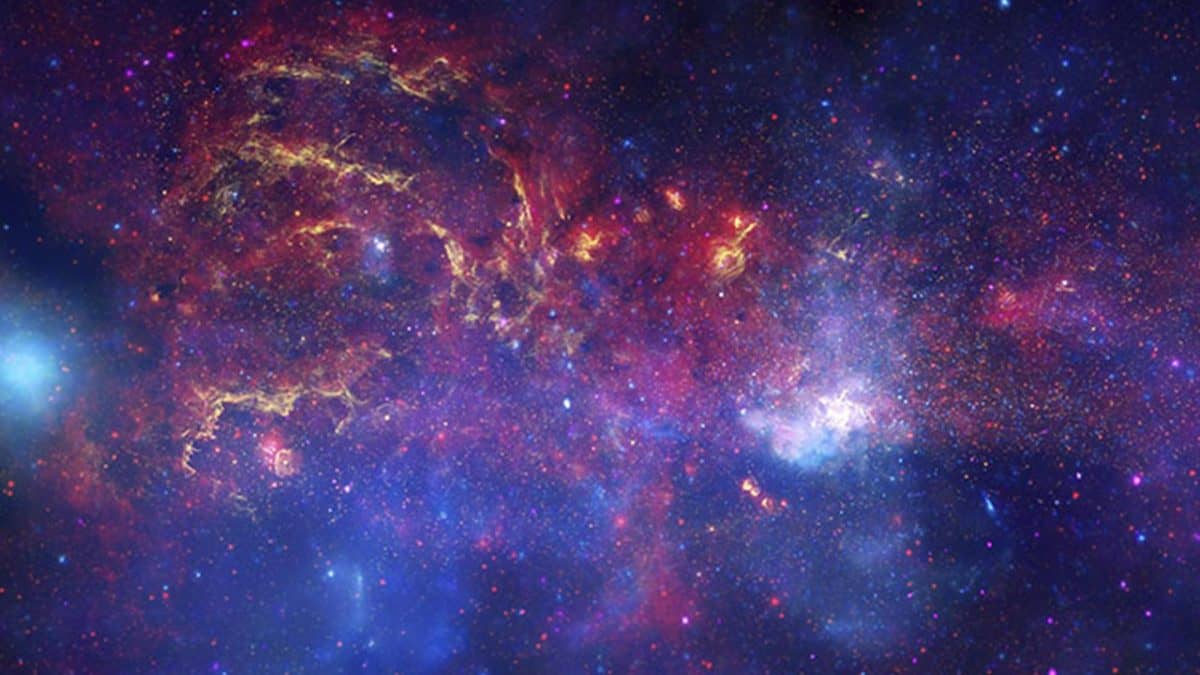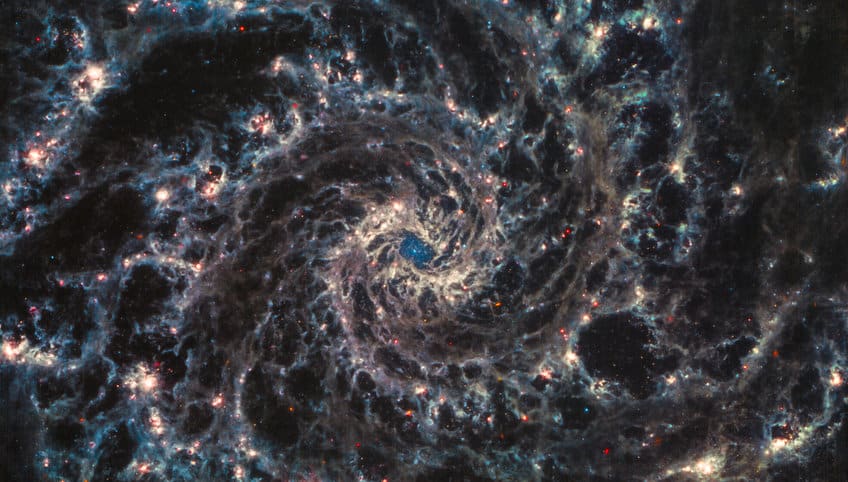JWST Reveals Never-Before-Seen Images of Star Formation in Nearby Galaxies
The iconic James Webb Space Telescope (JWST) has recently produced exceptional observations of the Universe, which have captivated the scientific community. By targeting a few nearby galaxies with one of the JWST's instruments, researchers were able to capture never-before-seen images of star-forming material.

Their findings uncovered extensive strands of dust, previously invisible with other telescopes, as well as clusters of stars located near the center of the galaxies, and protruding 'spurs' where the dusty cocoons develop into new stars. These visually stunning observations present astronomers with preliminary insights into how stellar nurseries can influence the morphology of their host galaxies.
Astronomers associated with the PHANGS survey, an acronym for Physics at High Angular resolution in Nearby Galaxies, have conducted a study of several face-on galaxies. Through the use of advanced imagery, the researchers have been able to gain valuable insights into the process of star formation in galaxies located millions of light-years away.
Among their findings, the astronomers also captured a view of NGC 1365, a barred spiral galaxy positioned approximately 60 million light-years away. Notably, the observations revealed the crucial role played by the galactic bar in facilitating the transport of star-forming materials towards the center of the galaxy, which, in turn, leads to a surge in star formation in the core region. The JWST's Mid-Infrared Instrument (MIRI) was used to collect the data that generated this image.
To visualize the movement of dusty trails, the astronomers required advanced instruments that are finely attuned to the infrared segment of the electromagnetic spectrum, which enables the detection of the subtle heat emitted by the dust particles. This crucial capability could only be provided by the latest generation of instruments.

According to a description of the images published by the Max Planck Institute for Astronomy (MPIA) on Thursday, Eva Schinnerer, a research group leader at MPIA and a PHANGS collaborator, explains that the JWST's advanced capabilities allow for the precise identification of the youngest stars still residing in their birth clouds within nearby galaxies. This capability permits astronomers to explore the inner regions of gas-rich galaxies, where they can study the processes through which inflowing gas is transformed into stars, as observed in the case of NGC 1365. By comparing these results with those of the Milky Way, a more comprehensive understanding of star formation processes can be achieved.
Furthermore, the astronomers turned their attention to NGC 628, a spiral galaxy more commonly known as Messier 74 or the Phantom Galaxy. To observe this galaxy, the JWST conducted a distant observation of the constellation Pisces, situated approximately 32 million light-years away. The galaxy's symmetrical arms exhibit a 'grand-design' spiral shape, while a cluster of unobstructed stars illuminates its core. Moreover, as per the Max Planck Institute for Astronomy , the data revealed the occurrence of new star formations in the 'spurs' of the spiral arms.
One of the initial targets in the PHANGS survey for the JWST was the barred spiral galaxy, NGC 1433. This survey, consisting of a total of 19 galaxies, used the JWST to observe and obtain valuable insights into star formation processes in distant galaxies. In a statement published on Thursday, officials from the European Space Agency (ESA) noted that NGC 1433 is classified as a Seyfert galaxy, located relatively close to Earth and exhibiting a bright, active core. Further analysis of the data revealed that the MIRI image of NGC 1433 displayed a noticeable brightness and a scarcity of dust, which could potentially suggest a recent merger or collision with another galaxy.
The Max Planck Institute for Astronomy reports that the recent observations made by the JWST have revealed, for the first time, the 'cavernous bubbles of gas' released during the process of star formation and energy release. Prior to the advent of the JWST, observatories were unable to capture images of the dust particles in these galaxies, as their faintness prevented detection by optical telescopes from such a great distance, while their volatility was insufficient to emit ultraviolet light.
The JWST's advanced capabilities have overcome these limitations, enabling astronomers to develop a deeper understanding of the relationship between small-scale phenomena such as stellar births and the overall structure of galaxies.
Thank you for being a Ghacks reader. The post JWST Reveals Never-Before-Seen Images of Star Formation in Nearby Galaxies appeared first on gHacks Technology News.


0 Commentaires